First drive: The Toyota Camry ticks most of the boxes
Ryan Hirons has been out in Croatia, driving Toyota’s latest revived nameplate – the new Camry

What is it?
Toyota is on something of a roll with reintroducing names at the moment. First, there was the comeback of Corolla, returning to the UK (and built here, for that matter) in favour of the Auris. Later this year, the hotly-anticipated Supra is finally seeing the light of day — but before that we have this, the Camry. Here to replace the Avensis, it’s Toyota’s latest crack at the family saloon market.
Though this nameplate has only seen a brief bit of action in the UK during the ‘90s and early ‘00s, it’s one that’s well-known in global markets. Can it find equal success here? We find out…
What’s new?
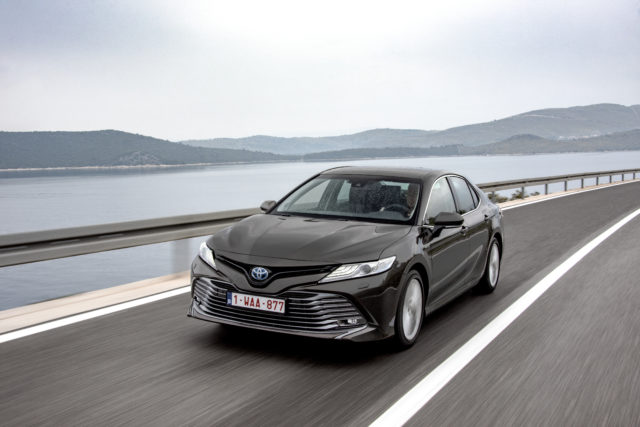
Name aside, there’s quite a lot new going on here. First is its ‘GA-K’ underpinnings, so far only seeing action on the very mechanically-similar Lexus ES, with Toyota saying it allows for a better driving experience without compromising on space.
There’s also the firm’s latest 2.5-litre ‘self-charging’ hybrid powertrain — also seeing action in the ES — while a stiffer bodyshell and new suspension design aim to deliver improved handling and ride quality. New switchgear in the cabin also aims to bring a more modern feel to the car compared with its predecessors.
What’s under the bonnet?
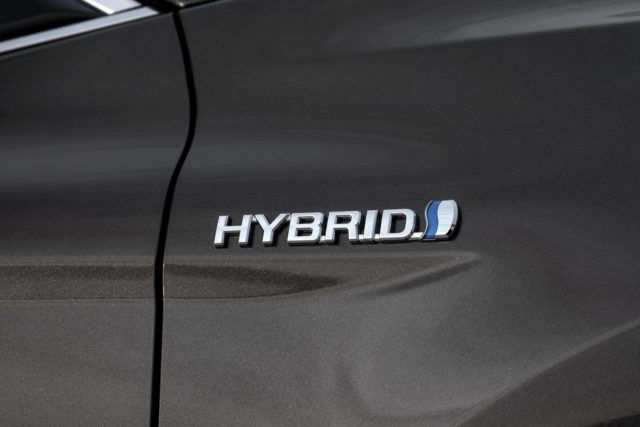
In the UK, the Toyota Camry will be offered with just one powertrain — the aforementioned 2.5-litre hybrid. It combines a four-cylinder petrol engine and an electric motor to develop 215bhp, with 221Nm and 202Nm of torque from each component respectively, which is delivered to the front wheels via a CVT gearbox.
As a result, it achieves 0-60mph in 8.1 seconds, with a top speed of 112mph possible. In terms of efficiency, Toyota claims it can achieve 50.4 to 53.3mpg on the combined WLTP cycle while emitting 101g/km of CO2.
Power is plentiful for everyday day use and its delivery is smooth even at speed, and the powertrain itself is refined and quiet when cruising. It is a little let down by a CVT drone when pressing on, though this doesn’t detract too much from the overall package.
What’s it like to drive?
When it comes to the very basics of driving, the Toyota Camry covers all the bases. Handling is pleasant enough, visibility all-round is decent and it’s just a very easy thing to drive.
For a machine that simply goes from A to B, it’s hard to look beyond the Camry. It’s nothing special behind the wheel, but there’s nothing wrong with it either. It’s comfortable and quiet at motorway speeds which is how most examples will likely spend their time travelling, and around town it’s no problem. Just don’t expect hot hatch rivalling fun…
How does it look?
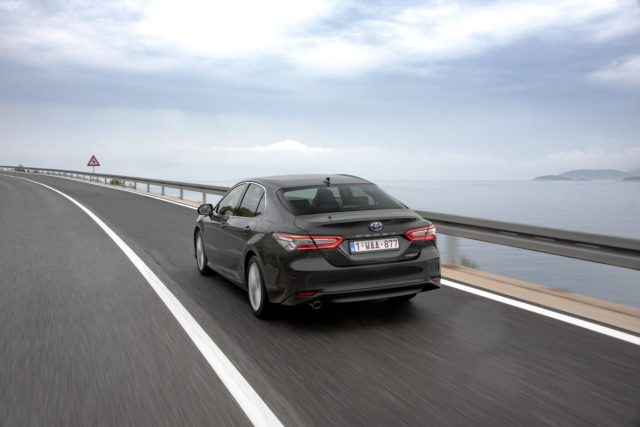
Ask anybody around you to quickly sketch a car. Go on, we’ll wait. Back? Cool, now compare that doodle with the Toyota Camry and it’s probably not too dissimilar.
If there was ever a car to just look like a car, the Camry is that. Its conventional boxy saloon design doesn’t feature much in the way of striking design highlights, maybe aside from its large lower grille up front, and that’s totally fine in its own right. Being truly honest, this is a machine designed to get from A to B in as little fuss as possible, and we suspect that isn’t going to bother many buyers. For those seeking head-turning ability though, you may want to look elsewhere…
What’s it like inside?
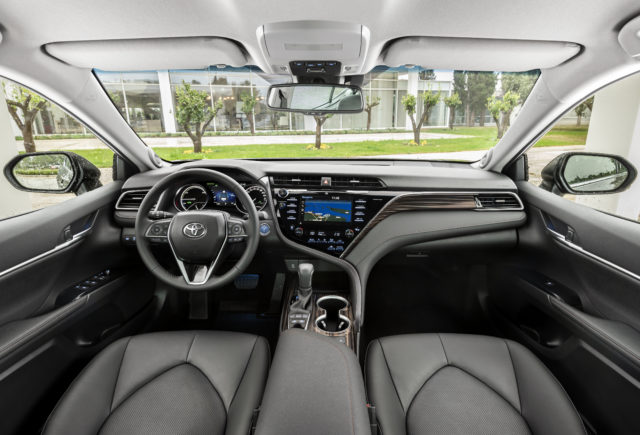
There’s something of a premium air in the cabin of the Camry, though it doesn’t quite breach into that area of the market. Leather adorns the cabin and feels good to the touch (and also masks what may otherwise be scratchy plastics), though its wood-effect trimmings let it down as they add a tacky edge more than anything. Its seats may also be a bit narrow for those of a larger frame.
As for boot space, there’s 524 litres with all seats in place which is about average for the segment — eclipsing the Mazda 6’s 480 litres, though lagging behind the Volkswagen Passat’s 586. Rear legroom is also not the most generous, but it’s certainly enough to accommodate four adults in relative comfort.
What’s the spec like?
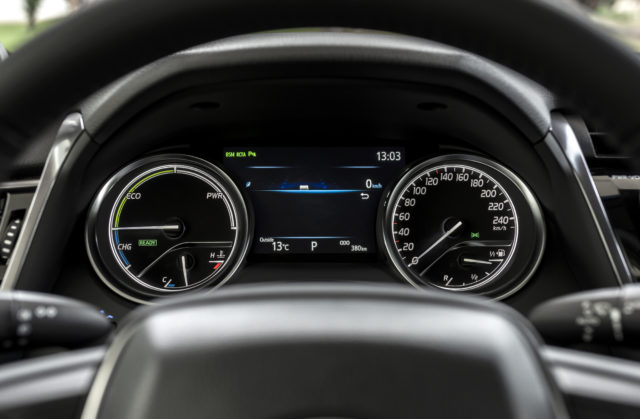
Standard equipment on the Toyota Camry is comprehensive, with luxury highlights such as 17-inch alloy wheels, metallic paint, leather upholstery, LED headlights, dual-zone climate control, keyless entry, all-round parking sensors, a reversing camera plus Toyota’s Touch 2 infotainment system displayed on a seven-inch touchscreen – although it still lags behind rival software in terms of user-friendliness. Pricing kicks off at £29,995.
Upgrading to the £31,295 Excel trim brings with it 18-inch alloys, LED fog lights, blind spot monitoring, a rear cross-traffic warning system and wireless smartphone charging.
A bonus in the Toyota’s favour too is that no matter the trim, its Safety Sense package comes for no extra cost. This adds pre-collision warning, adaptive cruise control, lane departure warning, road sign recognition and automatic high beam headlights.
Verdict
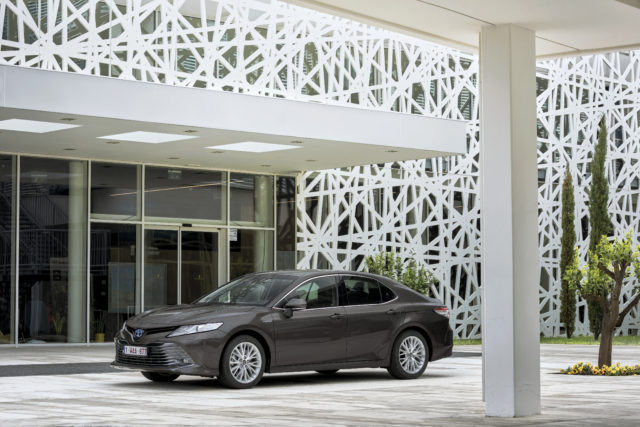
As a car that can simply go from one place to another with minimal fuss, it’s hard to go wrong with the Toyota Camry. It ticks all the basic boxes — good to drive, spacious enough, efficient and of course there’s the firm’s famed reliability which should put owners’ minds at ease. Even if its infotainment is still quite shoddy.
With an engine line-up limited to just one hybrid option though, it may become something of a niche choice compared with family saloon rivals — the market just isn’t ready to go fully electrified just yet.





